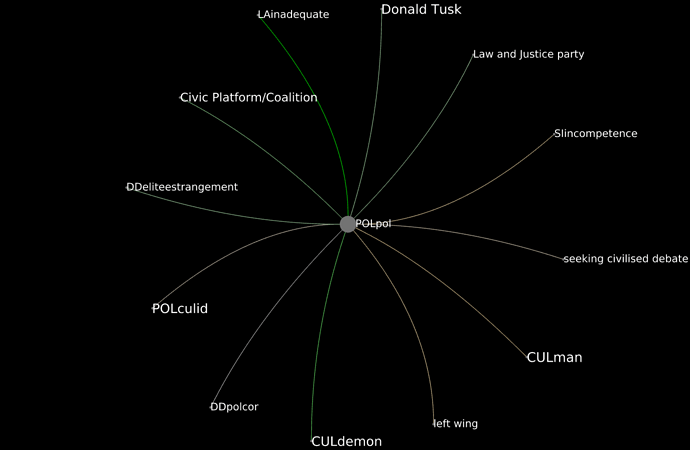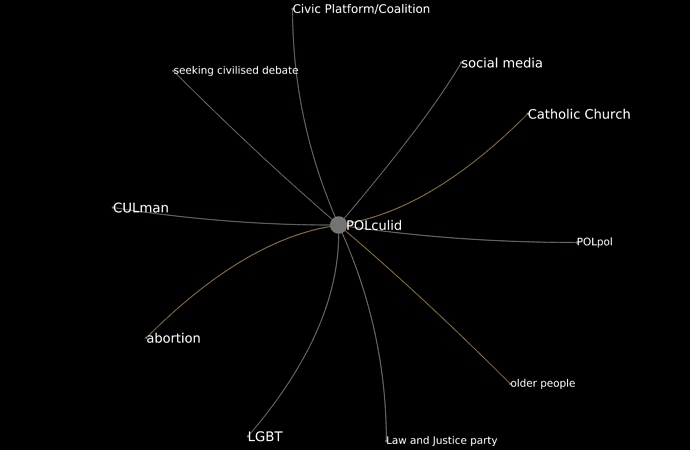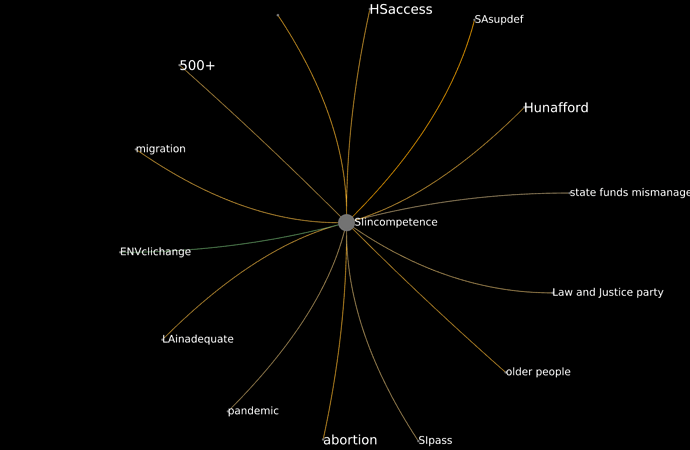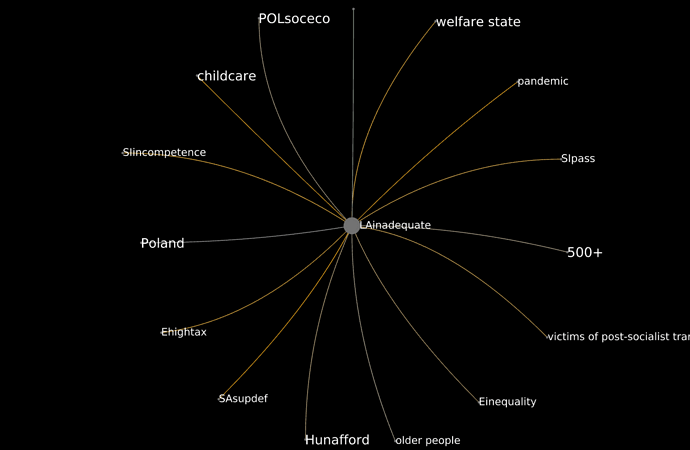@alberto Again, many thanks. I have to tell you that this deliverable is shaping up to be quite impressive, in my view. A lot of good work but several people. I am going though it, sentence by sentence, so does Nica. And I just spotted several places where visualisations will really strengthen the argument and increase the attractiveness of the product for the reviewers.
So, I understand, you will visualize both breath and depth. If not, you will let me know what is what. Second, we will have colors. This was a brilliant idea to color gender - I have never seen any study with this kind of information that is - in several places - truly fascinating.
Here are my kind requests (in no particular order):
Polish corpus, ego network of DDpolcor (political corruption), d > 7. The point is to see only three other nodes, Law and Justice Party, Civic Platform, and the Catholic Church
Polish corpus, ego network of DDpolcor (political corruption), d > 6. Should be able to see in addition to the above 3, two more - two types of polarization.
Polish corpus, ego network of POLpol (political polarization), d > 5. Should be able to see several co-occurring nodes
Polish corpus, ego network of POLculid (polarization cultural-ideological, d > 11. Should be able to see edges to 5 nodes: the Catholic Church, abortion, Law and Justice Party, political polarization (POLpol), and CULman.
Polish corpus, ego network of Catholic Church, d > 8.
Polish corpus, ego network of SAsupdef (support deficit), d > 8. Should be able to see about seven co-occurring codes.
Polish corpus, ego network of SIincompetence, d >6. Should be able to see about 10 co-occurring codes.
Polish corpus, ego network of LAinadequate, d >8. Should be able to see several co-occurring codes.
Many thanks and Happy Holidays for You and Yours!









